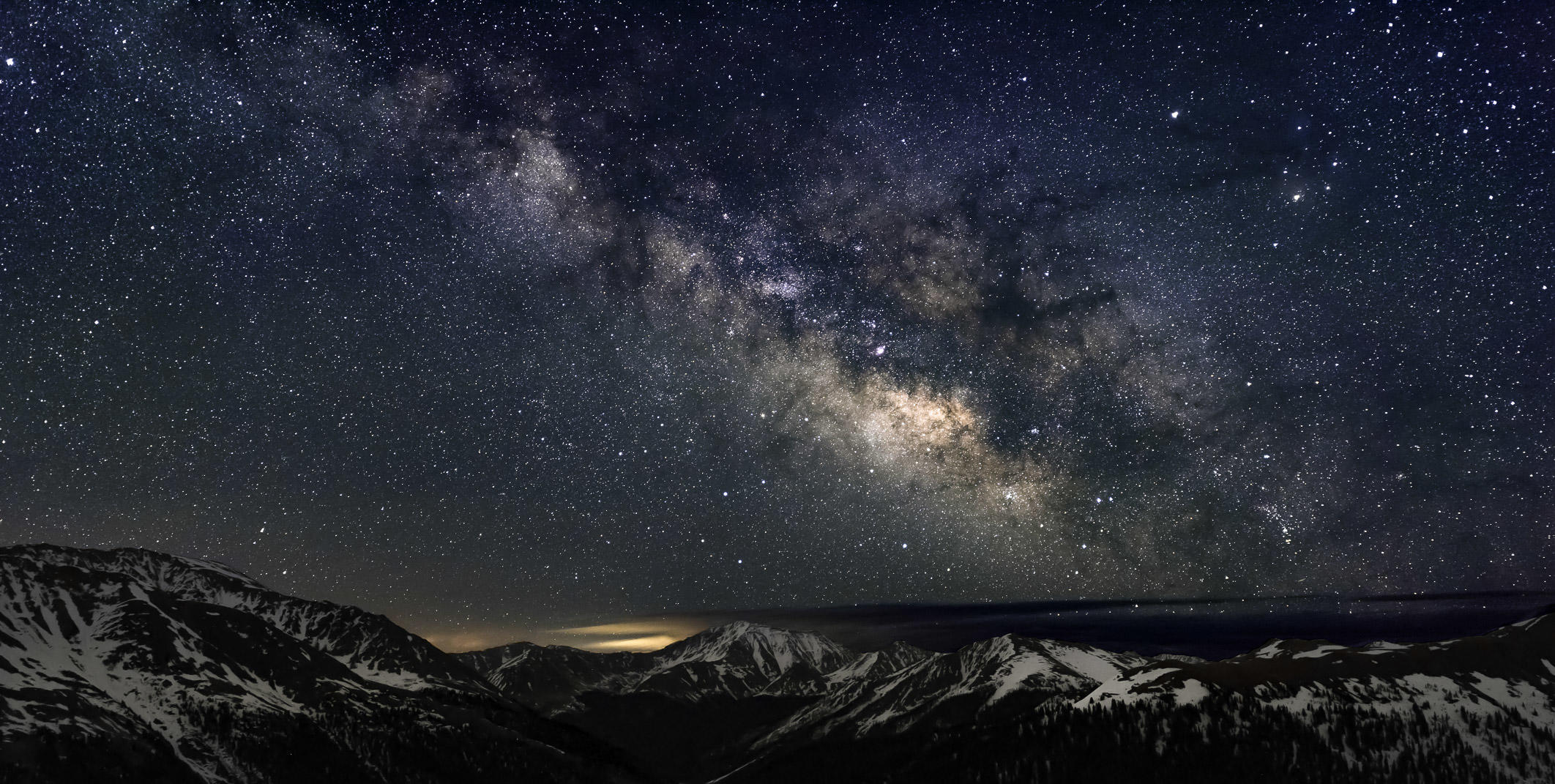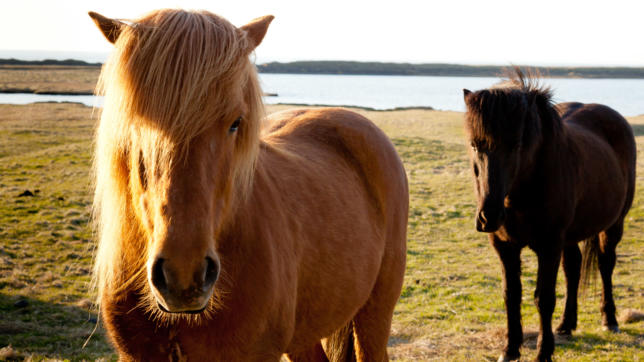
This is one of my favorite photos from recent years because it really captures the beauty of the Milky Way from a remarkable location. My cousin (the very talented Allison Otto) and I had been scoping out good weekends to take Milky Way photos from somewhere in the Colorado Rockies, but our schedules never quite aligned to make it happen. So when my wife suggested a trip to Aspen on one of those weekends, I already knew it would be a good opportunity to see the stars from nearby Independence Pass. While Aspen is certainly beautiful, Independence Pass is a marvel and one of the most spectacular passes in Colorado.
Independence Pass is one of the few places in the United States where it’s possible to drive at night to a place that’s pitch dark with clear, dry, high altitude air. Standing on top of it is a like being in a brilliant dream of twinkling stars and night sky. Unless you’ve been there, it’s hard to imagine the incredible starlight you can see at 12,095 feet on a crisp cold night without any clouds – it’s intoxicating.
That said, Independence Pass has two major challenges: the road from Aspen and the weather at the top. The road up from Aspen is wild, with crazy twists and narrow single lane sections rounding blind bends where you hope nobody is coming down the other way. It’s difficult to drive during the day, so I was not looking forward to driving it on a moonless night just to take a photo. As for the weather, the pass is only open during the warmer months, usually from around June 1 to November 1. I took this photo on June 4, just days after the pass had opened for the year, which meant there was still a foot of snow at the top.
I set out from Aspen and arrived at the summit around 11pm. After ungluing my fingers from the steering wheel, I gathered my gear and started walking towards an observation deck about 50 yards from the parking lot. The night was incredibly dark, and I could not see much of anything more than a few feet away. Fortunately I found the path to the deck right where I expected, however all along the trail were melting slush puddles, each hidden under a layer of ice that looked just like snow. I evaded most but stepped in one that was deep enough that the water overflowed the tops of my boots and soaked my feet. I was quite cold, but I pushed on knowing that I had only one shot at a photo like this.
After arriving at the deck, I started taking photos of the majestic sky. On this occasion, I took my photos twice using two techniques – one I had used before and one that was new. I started by taking single exposure photos – a night photo technique I have used in the past but usually produces less satisfying results. I then decided to take several shorter bursts with the intent to stack them later using a new technique I had not tried before. After a couple of hours, I was both tired and cold – it was time to pack up my gear and go back to the hotel.
There was just one problem. After starting the return hike, I realized that I had lost both my sense of direction and the footpath back to the car. I knew it was no more than 50 yards away, but the ground was covered in packed snow and I couldn’t see any signs of my own or anyone else’s footprints. My flashlight wasn’t powerful enough to see more than a few feet, and I knew that if my sense of direction was wrong I could go walking right off of a cliff. With no moon, no lights, and no trail, I was dangerously alone in the dark. Thankfully, I had my GPS on me, which I had brought along to make it easy to geotag my photos later. I had turned it on before leaving the car, and the breadcrumbs reassuringly brought me back to the parking lot (while somewhat contradicting my own sense of direction). Yes, it’s entirely possible to get lost within shouting distance of your car in the middle of a very dark night.
After getting home, I processed this photo using both single shot and stacking techniques. I ended up preferring the stacked version of the stars, which I created with Starry Landscape Stacker using 9 separate 10 second exposures at ISO 1600, f/2.8. I then composited the star portion onto a separate mountain photo that was a single shot exposure for 176 seconds at ISO 1600, f/5.0. I retrospect, I should have stacked the foreground as well, because I ended up doing a fair amount of noise correction on it. That said, I think the photo turned out well regardless.



Very nice photo! Saw it on my Google Home Assistant’s screen saver and googled your name. By the way, what kind of camera and lens did you use for this photo? Thank you for sharing the information on how you processed the photos. Going to Slovenia over the summer and hope to take some nice photos (like yours) while hiking the Julian Alps and staying at one of Slovenia’s cozy mountain huts. 🙂
Thanks Marjan! Your trip to Slovenia sounds incredible. Definitely go outside at night and look at the stars. Light pollution is making them harder and harder to see in and around cities, and they can be extraordinary in a dark location at high altitude.
Duh… I should have clicked on “Show Photo Details”. 🙂
The last time I saw the Milky Way this clear and in such darkness that I could not see my hand in front of my face was in the 1960’s atop Pond Mtn., Ashe County NC.
Thank you for bringing back the memory of our awesome spiral galaxy from the viewpoint at near tip of one of her legs.
This is absolutely beautiful… I am not a photographer but enjoyed your story behind this photo.. what I am fascinated with is trying tomsee the night sky as it would’ve appeared hundreds , thousands of years ago. Do you sell your work to the public? I am interested ….Kristine S
Thanks Kristine! You might enjoy this article about how stars looked in the past and future:
https://www.wired.com/2015/03/gifs-show-constellations-transforming-150000-years/
I do sometimes sell my work. I’ll drop you an email with more details.
Hi, great picture!
have crossed over in my tv streamer screen saver.
and told my wife that pic should be hanged on our new badroom wall.
a reminder for how small and insignificant we r compare to the universe.
would like to purchase a full size file of the piture for development, please be in touch.
Rotem
rotem.mcm@gmail.com
I was born and raised in and around cities, so it wasn’t until I moved to rural Wisconsin that I encountered how truly dark a dark night could be! But then I also first encountered how spectacular the night sky is when you’re away from light pollution. Great picture!
Do you ever sell copies of any of your photos? I love the Independence Pass Milky Way Photo on April 28,2019 😊
This is magnificent! I can’t believe we live in a world so beautiful.
Do you sell copies of your photos?
I would love one for my daughter,
She loves that area so much.
Thank you.
I was having dinner when suddenly the Google Home screen saver showed this magnificent photo and as soon as I saw the mountains I thought “that has to be Aspen”. Once you see that view is really hard not to recognize that amazing place again. Although I have never been there during Independence Pass opening time, your photo brought back some beautiful memories from last winter. Thank you Stanton!
Hello 👋🏼
Absolutely stunning, I saw this picture on Google Chrome passing by on my television 😍
Am I right when I say we see Orion’s Belt here?
I have to ask brutally, but can I get permission to use this picture on my upcoming website? It will be a galaxy theme with blog to help make the world a better place, maybe with a reference?
Please let me know how to contact you, many thanks!
Kai
Dear Stanton,
I saw this photo on my tv waiting for chromecast/ Google.
I really like this photo of the beautifull starheaven.
Thank you very much for sharing the beauty of heaven and earth by showing us your pictures.
Mirjam from the Netherlands
Real beauty! The snowy peaks add an extra element of awesomeness to an otherwise incredible image.
Next time you’re in the Aspen area hit me up and we’ll go out for a Milky Way shoot or sunrise/sunset adventure.
Cheers
Craig
This is an incredible photo, it popped up on my Chromecast screensaver and now I want it on all my computers. Is it possible to have a super high res version or maybe raw data available? Thanks again for your beautiful photos!
I so appreciate this google device which gave the opportunity to see your beautiful photo. I also appreciated hearing about your challenge in your efforts to obtain the photo. I am glad everything turned out well in the end.